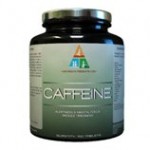아데노신(adenosine)은 세포 내에서 ATP(아데노신 3인산)의 분해에 의해 생성되는 퓨린 뉴클레오사이드(purine nucleoside)입니다. ATP는 모든 세포에서 생명활동(물질운반, 물질합성, 신경자극전도, 근육운동, 체온유지 등)에 이용되는 주 에너지원입니다. 아데노신(adenosine)은 다양한 기전을 통해 종양의 생존을 촉진합니다. 아데노신(adenosine)은 각기 다른 세포 막에서 특정한 퓨린수용체(purinergic receptors)와 결합을 통하여 많은 생리적 기능을 조절합니다. 아데노신(adenosine)은 고형 종양(solid tumors)에 축적되어 종양의 증식과 혈관신생(angiogenesis)을 촉진하며, 한편으로는 면역시스템에 대한 저항성을 종양에 부여합니다.
세포 외부의 아데노신(adenosine)은 대부분 아데노신 수용체(adenosine receptors)의 활성화를 통해 그 기능을 시작합니다. 아데노신 수용체(adenosine receptors)는 A1, A2A, A2B와 A3 네가지 종류가 있고, 이들은 모두 G단백질공역(coupled to G-proteins) 수용체며, 수용체 A1과 A3는 억제성 G단백질과 연관되었습니다. 세포 표면의 이들 네가지 아데노신 수용체들 각각은 다양한 종양세포에서 상향조절(upregulated)되는 것으로 알려졌습니다. 아데노신 수용체는 염증세포와 암세포에서는 과발현(overexpression)되나, 정상세포에서는 저발현(low expression)됩니다. 아데노신 수용체(adenosine receptors)는 세포조직과 기관이 손상되지 않도록 보호하는 데 핵심역할을 하는 세포신호전달의 중요한 유비쿼터스 매개물질(ubiquitous mediators)입니다. 특히 아데노신(adenosine)은 각기 다른 수용체-매개 작용기전에 의해 세포조직의 수리와 보호를 유발시키며, 이에는 산소 공급/수요 비율의 증가, 전처리(preconditioning), 항염증 효과, 혈관신생(angiogenesis) 촉진이 포함됩니다. 특정 리간드(ligands)와 항진제(agonists) 또는 길항제(antagonists)에 의한 수용체의 활성화는 한 범위의 신호전달경로를 통해 종양의 증식을 조절합니다. 이제 우리는 아데노신 수용체 A1, A2A, A2B, 및 A3의 선택적 리간드(selective ligands)가 암치료와 염증이 특징인 다른 질환의 치료에 효용이 있음을 짐작할 수 있습니다.
Introduction to adenosine receptors as therapeutic targets.
Adenosine receptors and cancer.
Enhancement of tumor immunotherapy by deletion of the A(2A) adenosine receptor.
A3 adenosine receptor as a target for cancer therapy.
The A3 adenosine receptor as a new target for cancer therapy and chemoprotection.
Adenosine A2B Receptor Blockade Slows Growth of Bladder and Breast Tumors.
Hypoxia-inducible adenosine A2B receptor modulates proliferation of colon carcinoma cells.
카페인(caffeine)이나 테오필린(theophylline) 같은 메틸산틴(ethmylxanthines)은 아데노신 수용체(adenosine receptors)의 길항제로 작용할 수 있으며, 이들의 흥분작용(stimulant actions)은 주로 이러한 작용기전을 통해 나타납니다. 테오필린(theophylline)은 천식이나 만성폐쇄성폐질환(CDPD) 환자들의 기도 경축(airway spasms) 치료에 사용하는 처방약물입니다. 카페인(caffeine)은 가벼운 흥분제(stimulant)입니다. 많은 체중감소 정제에는 대사작용을 높이기 위해 카페인(caffeine)이 첨가된 것을 볼수 있습니다. 그러나 카페인이 다른 의료목적으로 사용될 수 있는 여러 추가적인 상태가 있습니다. 다수의 연구에서 카페인(caffeine)과 암 사이의 연관성이 확인되었습니다. 카페인(caffeine)은 아데노신(adenosine)과 유사한 화학구조라 아데노신 수용체에 카페인이 결합함으로써 아데노신이 결합을 하지 못하게 됩니다. 카페인(caffeine)의 효능은 이처럼 주로 아데노신 수용체(adenosine receptors)의 차단을 통해 이루어집니다. 결론적으로, 아데노신 수용체(adenosine receptors)와 관련된 표적의 접근은 암의 자연치유 가능성을 높일 것이며, 그것이 바로 전세계적으로 소비되는 성분인 카페인(caffeine)입니다.
Emerging adenosine receptor agonists – an update.
Methylxanthines, inflammation, and cancer: fundamental mechanisms.
Xanthines as adenosine receptor antagonists.
Caffeine intake induces an alteration in human neutrophil A2A adenosine receptors.
 카페인(caffeine)은 커피, 차, 초콜릿, 청량음료에 함유된 매우 흔한 성분이며, 또한 캡슐이나 정제, 파우더 형태로 구입할 수도 있습니다. 전세계 인구의 약 80%가 카페인(caffeine)이 함유된 물질을 매일 섭취합니다. 전형적인 8온스(240 ml) 컵의 인스탄트 커피에는 약 100 mg의 카페인이 들어 있으며, 이것은 1컵의 차(tea) 또는 12온스(360ml) 캔이나 병에 든 청량음료의 약 2배입니다. 30 g의 초콜릿바 1개에는 1/2컵의 차(tea)에 든 만큼의 카페인이 들어있을 것입니다. 순수한 카페인은 노도즈(NoDoz), 스테이어웨이크(Stay Awake) 및 비바린(Vivarin) 같은 제품을 파우더나 캡슐 또는 정제로 구입할 수 있습니다.
카페인(caffeine)은 커피, 차, 초콜릿, 청량음료에 함유된 매우 흔한 성분이며, 또한 캡슐이나 정제, 파우더 형태로 구입할 수도 있습니다. 전세계 인구의 약 80%가 카페인(caffeine)이 함유된 물질을 매일 섭취합니다. 전형적인 8온스(240 ml) 컵의 인스탄트 커피에는 약 100 mg의 카페인이 들어 있으며, 이것은 1컵의 차(tea) 또는 12온스(360ml) 캔이나 병에 든 청량음료의 약 2배입니다. 30 g의 초콜릿바 1개에는 1/2컵의 차(tea)에 든 만큼의 카페인이 들어있을 것입니다. 순수한 카페인은 노도즈(NoDoz), 스테이어웨이크(Stay Awake) 및 비바린(Vivarin) 같은 제품을 파우더나 캡슐 또는 정제로 구입할 수 있습니다.
하루 300 mg의 카페인 섭취는 안전한 것으로 일반적 합의가 되었습니다. 이것은 대략 하루 3컵(대형 머그잔이나 대형 종이컵이 아님)의 커피에서 섭취되는 카페인의 양과 같습니다. 하루 300 mg 이상의 카페인 섭취는 “카페인 불안증(caffeine jitters)”을 일으킬 수도 있습니다. 더 많은 양의 카페인은 신경과민, 불면 및 심지어 불안증을 유발하고 설사의 원인이 되기도 합니다. 어떤 사람들은 다른 사람들에 비해 카페인에 훨씬 더 민감하기도 합니다. 그러므로 어느 누구에게나 안전한 기준 용량을 제시하기는 어렵습니다. 그러나 예상되는 카페인의 치료효과는 용량과 기간에 의존되는 것이 확실합니다. 어떤 제품은 용량산정에 연령(age range)을 적용할 것이지만, 그러나 체중에 의한 용량산정이 더욱 효과적입니다. 그러므로 치료목적으로는 체중 1파운드 당 4.5 mg (미터법은 체중 kg당 10mg)의 카페인 섭취를 권합니다. 예를 들면 체중 133파운드(60 kg) 여성은 하루 약 600 mg (133 X 4.5 =598), 3회x 200 mg 의 카페인을 보스터짐(BosturZym) 같은 5-LOX억제제와 복합적으로 복용할 수 있을 것입니다. 보스터짐(BosturZym)은 카페인과 함께 사용시 암과 백혈병을 막아내는 시너지효과를 만듭니다. 이들은 모두 함께 복용할 수 있습니다. (5-LOX억제제에 관해서는 아래 글 참조)
주의사항: 정제나 파우더 같은 형태의 고순도 카페인은 우발적으로 과량 복용할 수 있으며, 오심, 구토, 위장거북함, 불면증, 빈뇨 또는 의식혼미의 원인이 될 수도 있습니다. 만일 이런 증상들이 지속되거나 악화되면 신속하게 의사 또는 약사에게 알리시기 바랍니다. 비바린(Vivarin) 또는 노도즈(No-Doze) 같은 카페인 1통을 한꺼번에 복용하면 치명적으로 위험할 수 있습니다. 또한 커피나 다른 카페인이 많이 든 음료를 함께 해도 위험성이 높아지므로, 위험상태에 이르기 전에 위험용량에 관해 숙지하시기 바랍니다.
경구복용 카페인 용량
효과시작: 5 – 10분
효과지속: 1.5 – 5시간 , 영향으로부터 정상회복: ~24시간까지